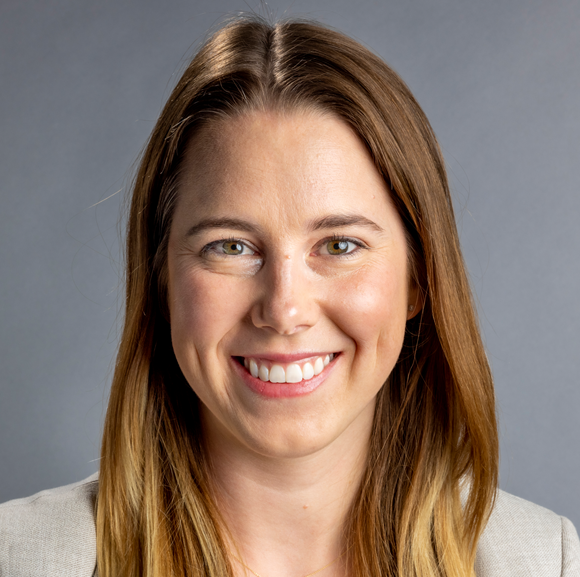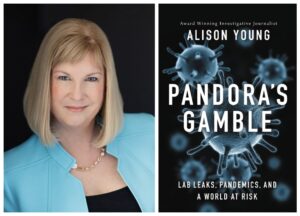
Emily Woodruff, a health care reporter for the New Orleans Times-Picayune/New Orleans Advocate, was recognized as one of the winners of AHCJ’s 2021 Awards for Excellence in Health Care Journalism in the beat reporting and health policy (small) categories at Health Journalism 2022.
Her winning local COVID-19 coverage offered a vivid picture of how Louisiana’s hospitals, health care providers and residents were coping with the ongoing pandemic and other events impacting health in communities, such as hurricanes, the opioid epidemic and other diseases. In many of her articles, Woodruff provided readers with a sense of connection to people featured in her stories.
In this “How I did It,” Woodruff shares her process for building trust with sources and enlivening her stories.
This interview has been edited for brevity and clarity.
How do you create captivating scenes in your articles? What are your top tips?
You can probably tell in the stories when I was there with someone as an interaction unfolded or when I got to meet someone in their environment. I think that helps a lot. During COVID, we weren’t able to do a lot of that, and it’s something I missed. I think health care reporters in general, have to spend more time interviewing someone for any given story. Often [health reporters] are interviewing people who aren’t used to talking to the media. For a lot of these stories, you have to spend some time [with them]. You have to indicate that you understand where they’re coming from. So, a lot of times that looks like just being informed about whatever issue it is that they’re facing.
How can reporters try to put themselves in the shoes of the people they interview?
A part of it is [reporting in the same community] for a while. Stories build upon stories. It’s just getting to know your community and being there. I always want someone who is in my story, when they’ve read it, to feel like: “She understands what it’s like to walk down [my] street and [feel] that heat of the sun [as] I walk down to get to my bus stop so that I can go to my medical appointment.” I want them to know that because I was there, I understand, to the extent that I can, what they’re going through. I think it’s caring and being informed about the community.
I’m thinking about a story from several years ago. I had approached this man in a community garden. I had just been assigned to this neighborhood. You know how you feel when a source doesn’t want to talk to you? You can tell. They’re like: “Please go away.” I was getting that vibe. So I brought up how the local hospital had a Legionnaires disease outbreak … I gave him that window of, I know this thing about your community. … Then he was willing to talk to me.
Last year, you wrote a lot about how COVID is overwhelming hospitals. What are you reporting on now?
I’ve been writing about how cases are ticking up again. I’ve written a little about wastewater and mask recommendations coming back but not being mandated. The challenge is, people have a completely different attitude toward COVID than they did in the past, and I’m trying to cover it in a meaningful way. The numbers get so high, they become sort of meaningless.
So, how do you make those numbers more relevant to people?
It depends on the story. If I have a couple of days, I will talk to researchers and say: ‘Can you put me in touch with anyone?’ Or, I will scour social media and look for people to demonstrate the story. I have been covering this for a while, so at this point, I have this group of people and contacts whom I’ve had conversations with about a certain subject and who mentioned something else that was interesting that I filed that away. Now I am now going back to them. All those little interactions I had popped back up and sometimes are key to getting readers to see themselves in a story.
Let’s go back to what you said in the beginning. You said you’ll walk the street in the hot sun to the bus stop so you can say that you have been there. How did you learn that technique?
I learned that in journalism school at Columbia. They sent me out to a neighborhood in the Bronx and told me to figure out a story. [I learned] it is so much easier to write and understand what a person goes through if you’ve been there and seen them talk about [something]. At a daily newspaper, it’s a luxury to do that, and I don’t always get to take the time to find the right person. But I can tell you that once I get out there and talk to people … it is restorative.
How were you able to diversify your sources as a local reporter?
I rely on local universities often to connect me with experts because they often have less restrictive media policies than hospitals. But if you’re going through academic institutions, often those people have admitting privileges … and they’re able to talk to you. Locally-owned or small businesses are easier than large corporations. It’s difficult to get CVS pharmacists to comment, for example, so I go to locally-owned pharmacies. Same thing with funeral homes. You have to keep calling around until you find someone who can talk to you. That’s the reality of reporting right now — large corporations have strict media policies — and they dominate the health care landscape.
How do you get people to trust you?
One of the things about being in New Orleans and Louisiana, and it is a reason I love being a reporter here, is that people talk. I can show up on someone’s porch and they will say, “Yes. Come in. Sit down.” With medical stories, sometimes that’s not always the case. That’s the thing that people can sometimes feel private about. But I think people are often just looking to be listened to.
That’s always something I tried to do in a story, to make people feel like I was listening to them and that I got it right. Sometimes you run into someone who just doesn’t want to talk. You can sense the distrust. But I think it’s [about] just listening and explaining. Make sure they know who you are as a journalist. I found that just watching [them] was the most useful thing. People often don’t always know what the most compelling thing is about their story, you know? So, you have to watch and look for the real moments that are unfolding before you.








